What Is PipeMagic Malware?
A new and sophisticated threat has emerged on the cybersecurity radar. Called PipeMagic, the malware is a plugin-based trojan that’s been used in advanced, targeted attacks across the globe since at least 2022. Recently, it gained widespread attention for exploiting a serious Windows vulnerability, CVE-2025-29824, affecting the Common Log File System (CLFS). This zero-day has enabled attackers to escalate privileges and deploy ransomware with alarming efficiency.
PipeMagic isn’t just another trojan. Its modular design allows attackers to adapt and evolve their methods post-infection, making it a serious and persistent threat to both individuals and organizations.
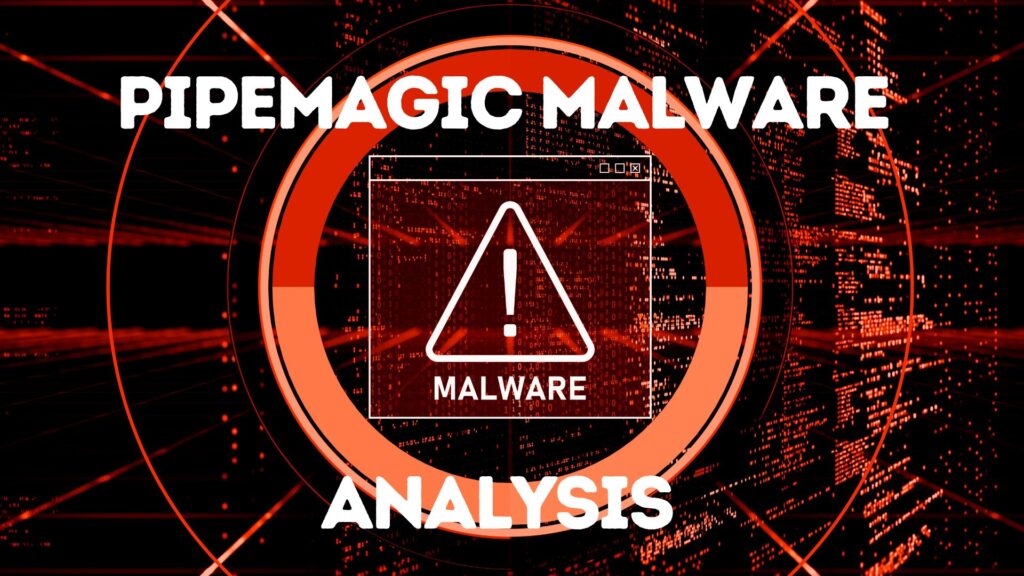
PipeMagic Malware Summary
| Name | PipeMagic Malware |
| Type | Trojan / Malware Infection |
| Capabilities | The malware allows its operators to elevate privileges on infected systems and deploy ransomware payloads. |
| Distribution Method | Exploits a zero-day, CVE-2025-29824, to get access to vulnerable systems. |
| Removal Tool |
See If Your System Has Been Affected by malware
Download
Malware Removal Tool
|
How PipeMagic Works
The malware’s infection chain and behavior reveal a high degree of sophistication. Here’s how it typically operates:
- Initial access: Delivered via malicious
MSBuildfiles downloaded using tools likecertutil. These files are often hosted on compromised legitimate websites. - Privilege escalation: Exploits the CLFS kernel driver vulnerability to escalate from a regular user to SYSTEM-level access.
- Credential theft: Extracts login credentials by dumping the LSASS memory, which is critical for further exploitation or data exfiltration.
- Payload execution: Deploys additional malicious modules and culminates in ransomware deployment, encrypting data and appending random extensions to file names.
Who Has Been Targeted?
According to recent reports from Microsoft and independent researchers, PipeMagic has been used in campaigns targeting various sectors:
- United States: IT and real estate sectors
- Venezuela: Financial institutions
- Spain: Software development firms
- Saudi Arabia: Retail industry
These campaigns appear to be orchestrated by highly skilled threat actors who adapt their methods based on target profiles and regional vulnerabilities.
Why PipeMagic Is Dangerous
PipeMagic’s use of a zero-day vulnerability, combined with its modular design, makes it particularly dangerous. It can evade traditional detection methods, spread laterally across networks, and deliver high-impact payloads such as ransomware.
These are the most dangerous aspects of the malware:
- Use of zero-day exploits before patches are available
- High-level stealth and persistence
- Designed for post-infection adaptability with plugin architecture
- Capability to extract credentials and conduct ransomware attacks
The good news? Microsoft has patched the vulnerability in recent updates. Systems running Windows 11 version 24H2 are already hardened against this exploit, thanks to tighter security measures around kernel memory access.

Recommended Protection and Mitigation Steps
To protect yourself or your organization from PipeMagic:
- Install the latest Windows security updates immediately.
- Use EDR (Endpoint Detection & Response) tools to detect unusual behavior.
- Monitor for signs of credential dumping or unauthorized tool usage (e.g.,
certutil). - Limit user privileges and use network segmentation to prevent lateral movement.
- Backup critical data regularly and store it offline or in secure cloud environments.
How to Remove PipeMagic Malware
If you believe your system has been infected with PipeMagic, follow these steps for removal:
- Immediately disconnect the infected machine from the network to halt spread.
- Reboot into Safe Mode and scan with a reliable anti-malware tool that detects advanced threats and trojans.
- Check for suspicious startup entries, scheduled tasks, or unknown services.
- Change all passwords after cleanup, especially if LSASS was accessed.
- In severe cases, consider a full system reinstallation to ensure complete eradication.
N.B. For corporate environments, a professional incident response team should be engaged to contain and assess the breach.
Preparation before removing PipeMagic Malware.
Before starting the actual removal process, we recommend that you do the following preparation steps.
- Make sure you have these instructions always open and in front of your eyes.
- Do a backup of all of your files, even if they could be damaged. You should back up your data with a cloud backup solution and insure your files against any type of loss, even from the most severe threats.
- Be patient as this could take a while.
- Scan for Malware
- Fix Registries
- Remove Virus Files
Step 1: Scan for PipeMagic Malware with SpyHunter Anti-Malware Tool
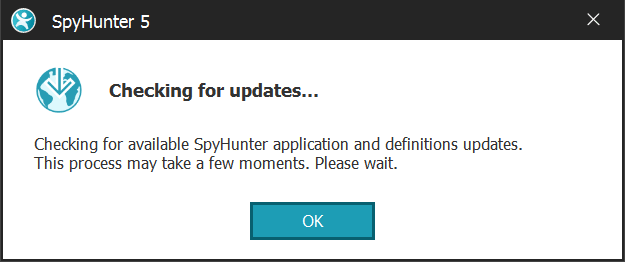
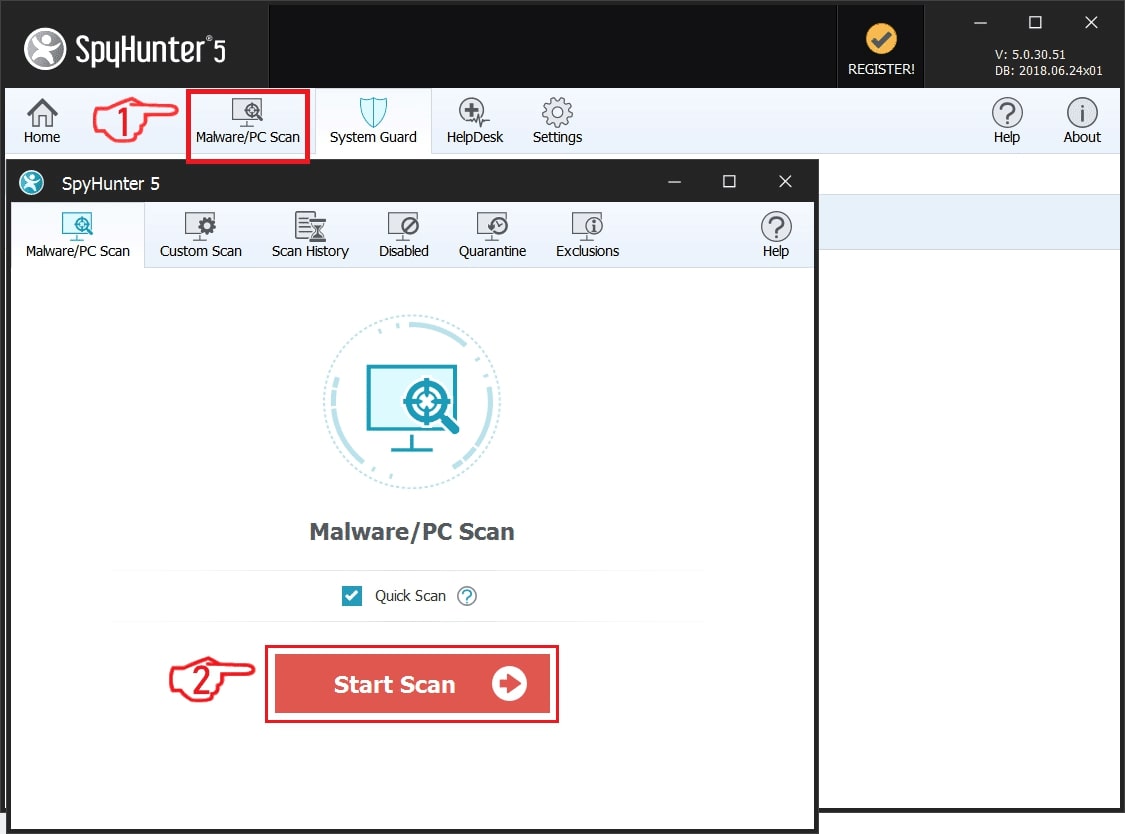
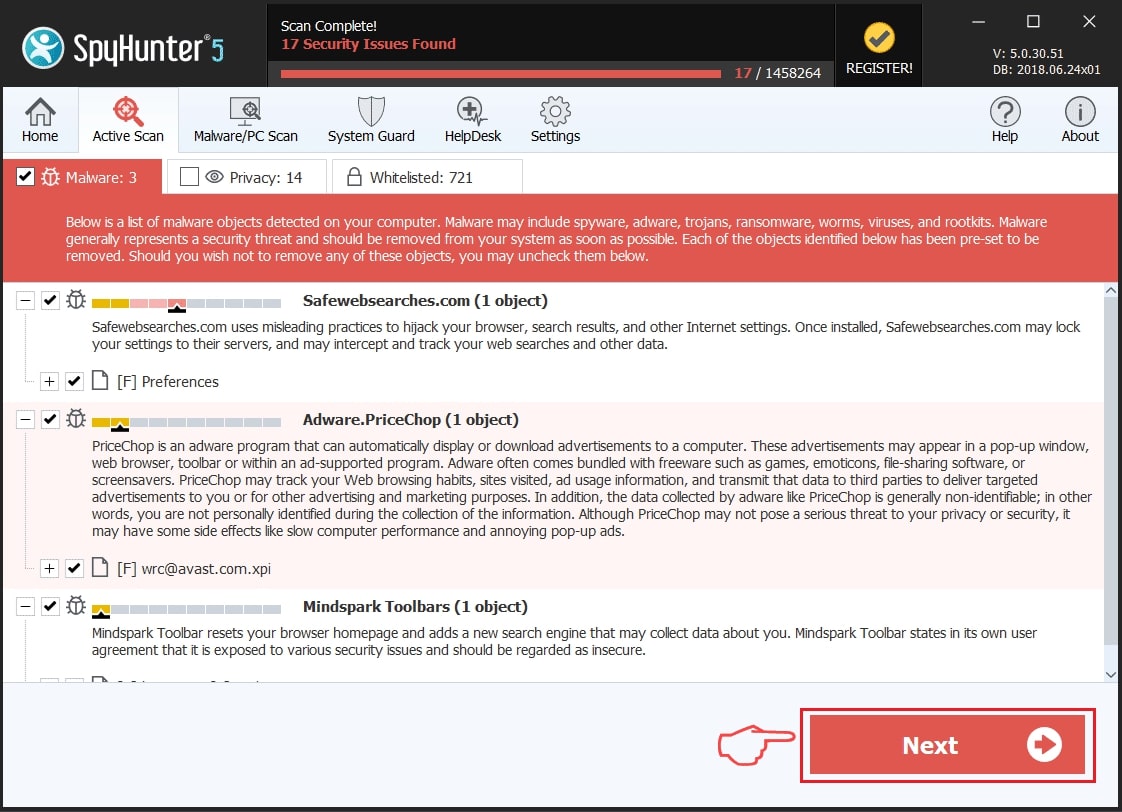
Step 2: Clean any registries, created by PipeMagic Malware on your computer.
The usually targeted registries of Windows machines are the following:
- HKEY_LOCAL_MACHINE\Software\Microsoft\Windows\CurrentVersion\Run
- HKEY_CURRENT_USER\Software\Microsoft\Windows\CurrentVersion\Run
- HKEY_LOCAL_MACHINE\Software\Microsoft\Windows\CurrentVersion\RunOnce
- HKEY_CURRENT_USER\Software\Microsoft\Windows\CurrentVersion\RunOnce
You can access them by opening the Windows registry editor and deleting any values, created by PipeMagic Malware there. This can happen by following the steps underneath:
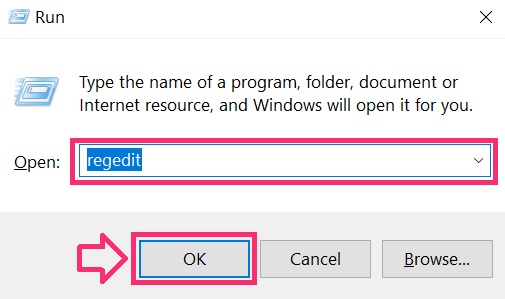

 Tip: To find a virus-created value, you can right-click on it and click "Modify" to see which file it is set to run. If this is the virus file location, remove the value.
Tip: To find a virus-created value, you can right-click on it and click "Modify" to see which file it is set to run. If this is the virus file location, remove the value.Step 3: Find virus files created by PipeMagic Malware on your PC.
1.For Windows 8, 8.1 and 10.
For Newer Windows Operating Systems
1: On your keyboard press + R and write explorer.exe in the Run text box and then click on the Ok button.

2: Click on your PC from the quick access bar. This is usually an icon with a monitor and its name is either “My Computer”, “My PC” or “This PC” or whatever you have named it.

3: Navigate to the search box in the top-right of your PC's screen and type “fileextension:” and after which type the file extension. If you are looking for malicious executables, an example may be "fileextension:exe". After doing that, leave a space and type the file name you believe the malware has created. Here is how it may appear if your file has been found:
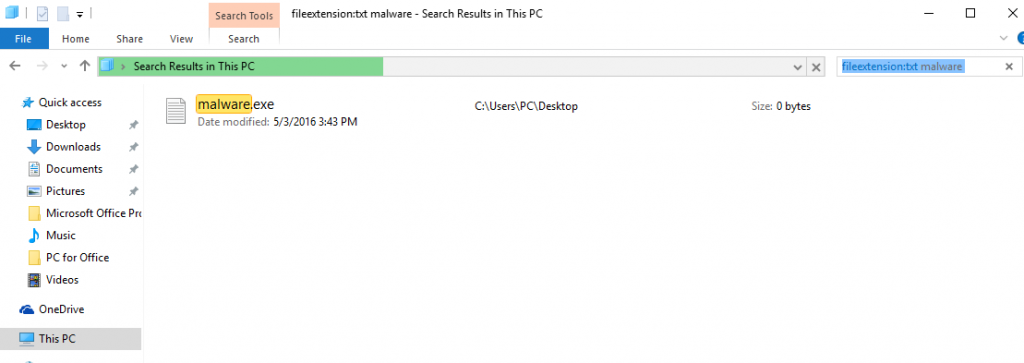
N.B. We recommend to wait for the green loading bar in the navigation box to fill up in case the PC is looking for the file and hasn't found it yet.
2.For Windows XP, Vista, and 7.
For Older Windows Operating Systems
In older Windows OS's the conventional approach should be the effective one:
1: Click on the Start Menu icon (usually on your bottom-left) and then choose the Search preference.
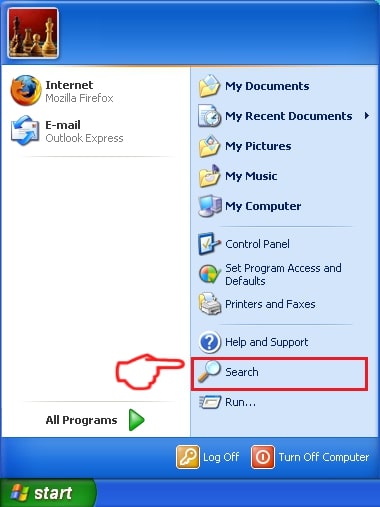
2: After the search window appears, choose More Advanced Options from the search assistant box. Another way is by clicking on All Files and Folders.
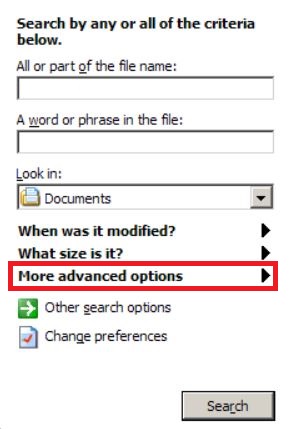
3: After that type the name of the file you are looking for and click on the Search button. This might take some time after which results will appear. If you have found the malicious file, you may copy or open its location by right-clicking on it.
Now you should be able to discover any file on Windows as long as it is on your hard drive and is not concealed via special software.
PipeMagic Malware FAQ
What Does PipeMagic Malware Trojan Do?
The PipeMagic Malware Trojan is a malicious computer program designed to disrupt, damage, or gain unauthorized access to a computer system. It can be used to steal sensitive data, gain control over a system, or launch other malicious activities.
Can Trojans Steal Passwords?
Yes, Trojans, like PipeMagic Malware, can steal passwords. These malicious programs are designed to gain access to a user's computer, spy on victims and steal sensitive information such as banking details and passwords.
Can PipeMagic Malware Trojan Hide Itself?
Yes, it can. A Trojan can use various techniques to mask itself, including rootkits, encryption, and obfuscation, to hide from security scanners and evade detection.
Can a Trojan be Removed by Factory Reset?
Yes, a Trojan can be removed by factory resetting your device. This is because it will restore the device to its original state, eliminating any malicious software that may have been installed. Bear in mind that there are more sophisticated Trojans that leave backdoors and reinfect even after a factory reset.
Can PipeMagic Malware Trojan Infect WiFi?
Yes, it is possible for a Trojan to infect WiFi networks. When a user connects to the infected network, the Trojan can spread to other connected devices and can access sensitive information on the network.
Can Trojans Be Deleted?
Yes, Trojans can be deleted. This is typically done by running a powerful anti-virus or anti-malware program that is designed to detect and remove malicious files. In some cases, manual deletion of the Trojan may also be necessary.
Can Trojans Steal Files?
Yes, Trojans can steal files if they are installed on a computer. This is done by allowing the malware author or user to gain access to the computer and then steal the files stored on it.
Which Anti-Malware Can Remove Trojans?
Anti-malware programs such as SpyHunter are capable of scanning for and removing Trojans from your computer. It is important to keep your anti-malware up to date and regularly scan your system for any malicious software.
Can Trojans Infect USB?
Yes, Trojans can infect USB devices. USB Trojans typically spread through malicious files downloaded from the internet or shared via email, allowing the hacker to gain access to a user's confidential data.
About the PipeMagic Malware Research
The content we publish on SensorsTechForum.com, this PipeMagic Malware how-to removal guide included, is the outcome of extensive research, hard work and our team’s devotion to help you remove the specific trojan problem.
How did we conduct the research on PipeMagic Malware?
Please note that our research is based on an independent investigation. We are in contact with independent security researchers, thanks to which we receive daily updates on the latest malware definitions, including the various types of trojans (backdoor, downloader, infostealer, ransom, etc.)
Furthermore, the research behind the PipeMagic Malware threat is backed with VirusTotal.
To better understand the threat posed by trojans, please refer to the following articles which provide knowledgeable details.


